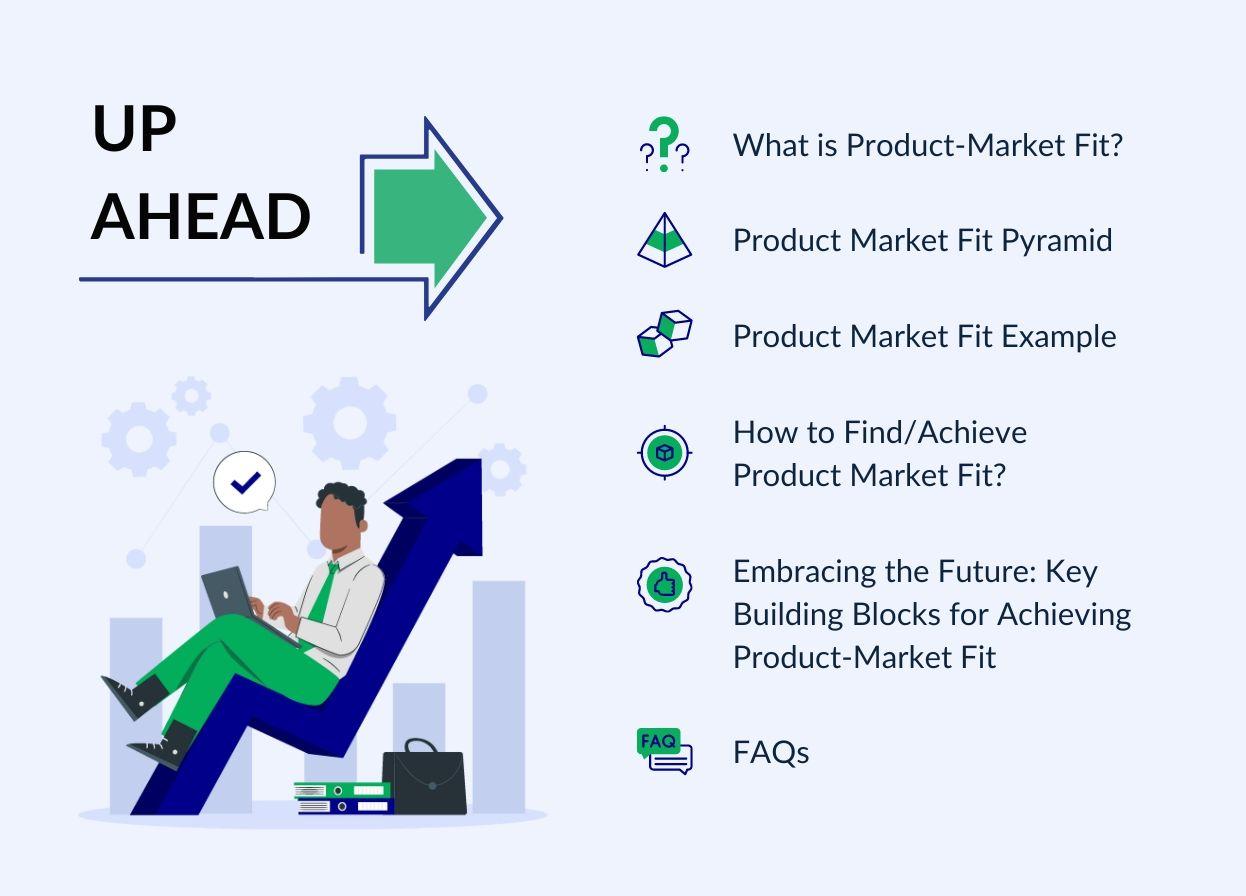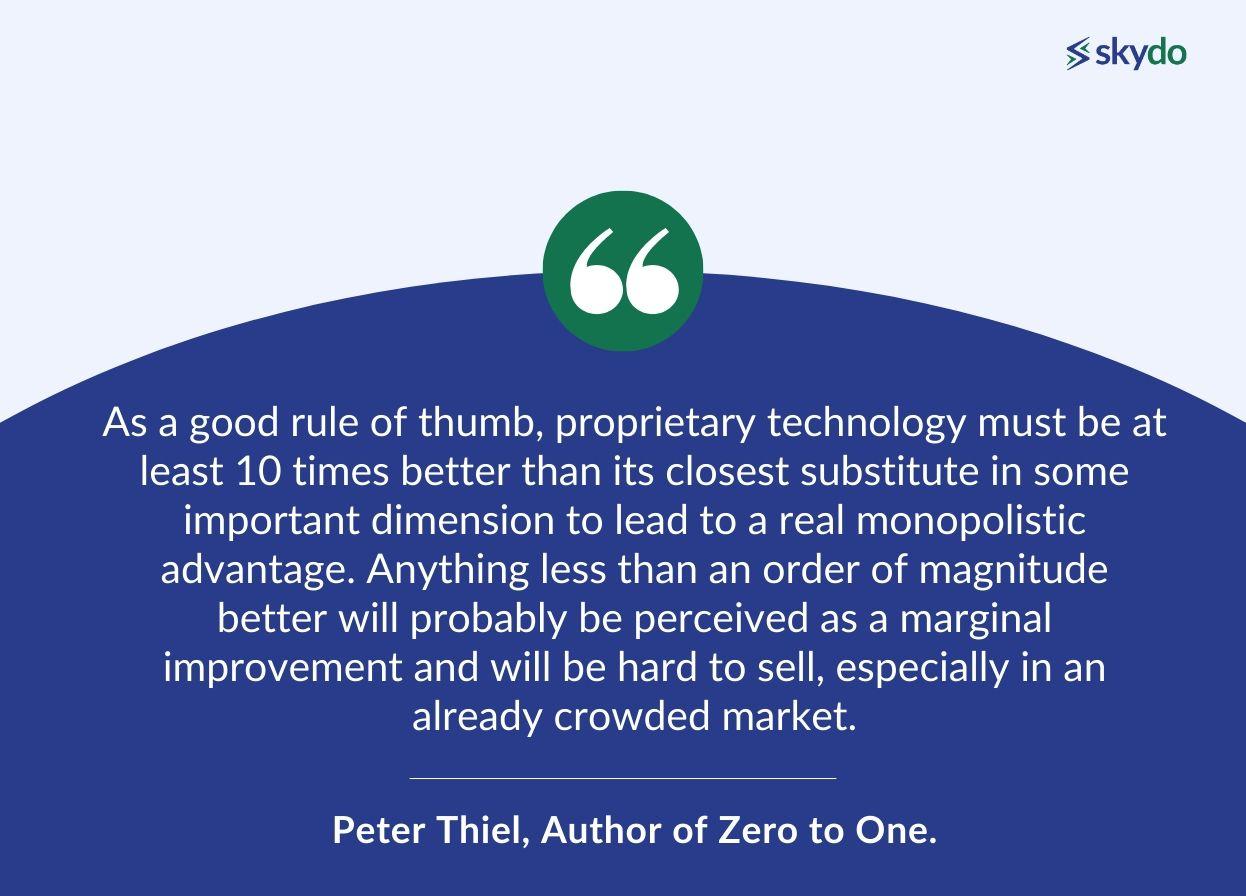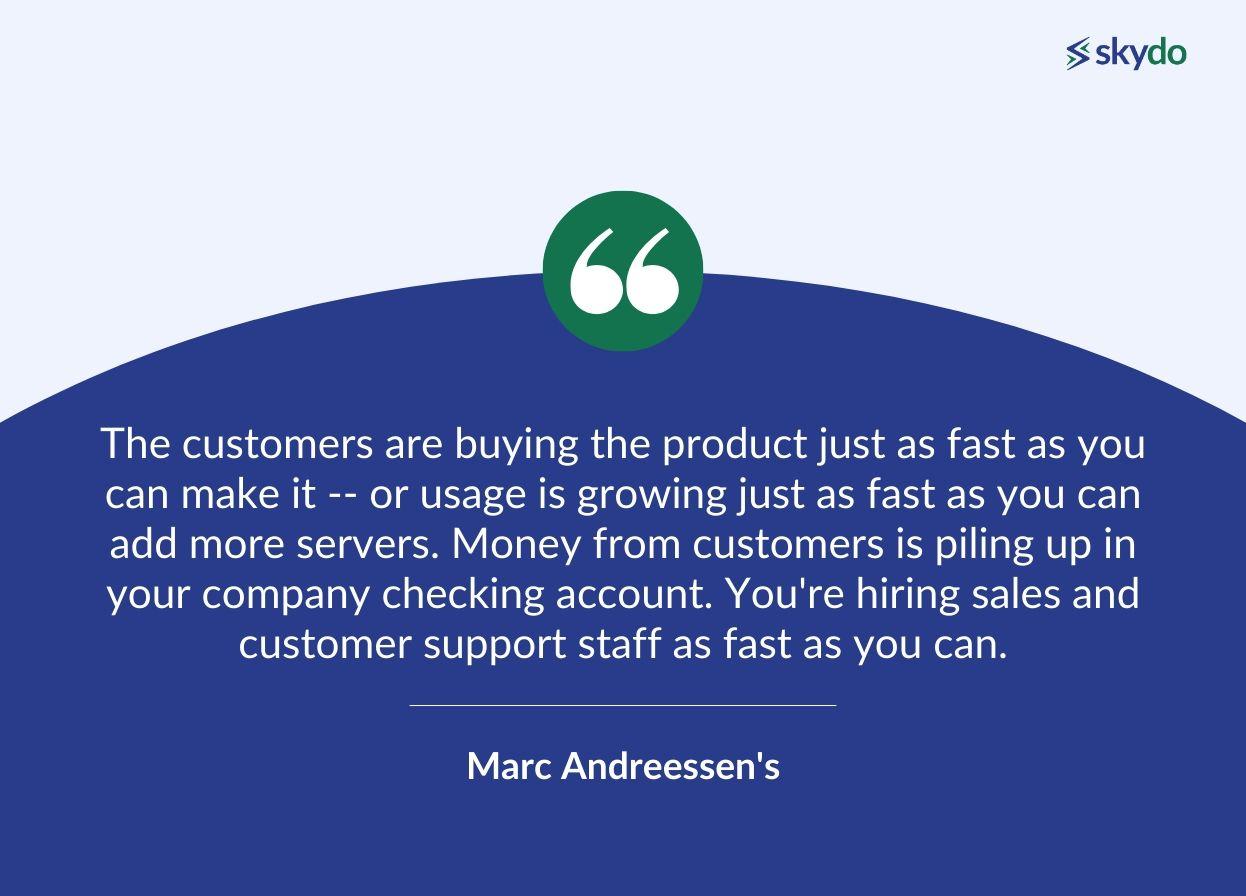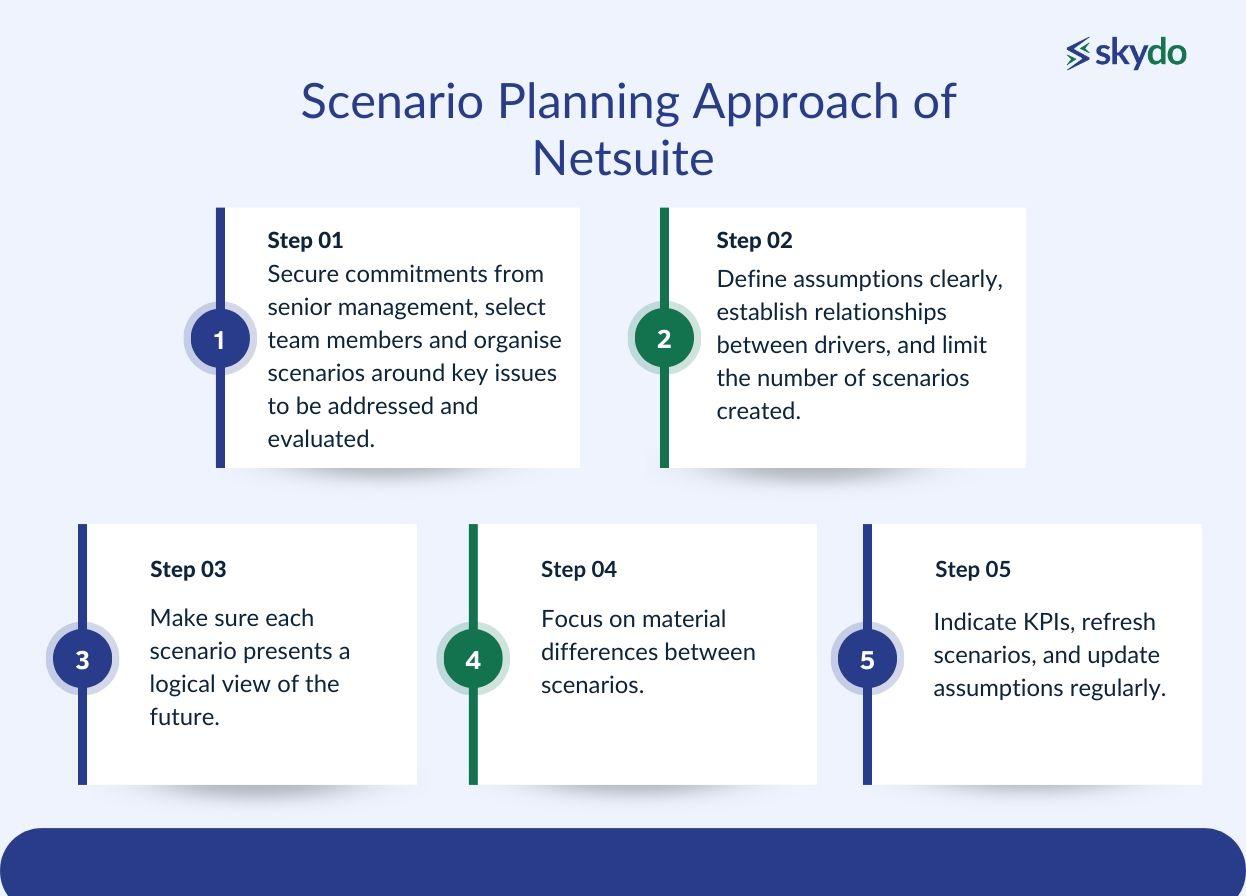Product-Market Fit (PMF): What It Is & How to Find It


The life of any startup can be divided into two parts — before product/market fit and after product/market fit. — Marc Andreessen
With the fast-paced nature of startups and businesses, many face a crucial challenge that few truly overcome: creating a product that resonates with the market's needs. Recent statistics reveal that 42% of startups fail as there is a lack of market need for their product.
Successful businesses understand that achieving product-market fit (PMF) is essential for success. PMF is the bridge that connects a product's value to the market's needs. But it isn't just about launching a product; it's about ensuring that it seamlessly integrates into people's lives and meets their expectations.
To stay ahead of ever-evolving trends, businesses need to be proactive, anticipating future needs and developments to remain relevant and indispensable in an increasingly competitive landscape.
What is Product-Market Fit?
Product-market fit is achieved when a product effectively meets the specific needs of its target buyer personas within corresponding market segments and channels. This alignment ensures that the product resonates with customers, addressing their pain points and delivering value. This crucial state signifies a harmonious match between what the product offers and what the market demands, enhancing the potential for business success.
Without this alignment, a product may struggle to gain traction or sustain customer interest. Pursuing product-market fit is fundamental for businesses, emphasizing the importance of understanding and catering to the unique requirements of the intended audience to maximize market acceptance and overall success.
Product Market Fit Pyramid
Product-Market Fit (PMF) is about striking a balance. It's about creating a product or service that addresses the specific needs, wants, and challenges of a particular market segment. Entrepreneurs need to be fast learners and find Product Market Fit quickly by having a flexible marketing strategy to adjust their product according to customer needs faster than large, slower corporations.

Peter Thiel - the author of Zero to One, says, "As a good rule of thumb, proprietary technology must be at least 10 times better than its closest substitute in some important dimension to lead to a real monopolistic advantage. Anything less than an order of magnitude better will probably be perceived as a marginal improvement and will be hard to sell, especially in an already crowded market."
Achieving Product/Market Fit (PMF) requires more than just having a presence in the market. It is about understanding and empathising with the needs and desires of your target audience. Erez Druk shares in his article that PMF is better visualised as a landscape with three distinct areas: PMF Desert, PMF Mountain, and PMF Mountain Peak. Each area requires an appropriate strategy, from making bold moves in the desert to scaling and building a real company at the mountain peak.
Product Market Fit Example
Consider the case of Grammarly, a digital writing assistant. Grammarly stands out from other spell-check and grammar tools. Instead of correcting mistakes, it provides context, tone suggestions, and clarity improvements to help writers, students, and professionals communicate more effectively. This recognition of user pain points has resulted in dedicated users who have propelled the tool's exponential growth from a simple tool to a household name in digital writing assistance.
Other notable examples include Netflix and Slack. Netflix is a prime example of adapting to changing market needs, while Slack shifted from its original idea of game creation to become one of the most popular communication platforms.
The only thing that matters in the first 12–18 months of a company is figuring out how to get your product into the hands of the right people. A lot of people can build a product, but figuring out what your market is and how to reach it is the biggest obstacle to getting a business off the ground. — Ranjith Kumaran, PunchTab Co-Founder
How to Find/Achieve Product Market Fit?
Achieving Product Market Fit (PMF) is crucial for startup success. Here's a concise guide:
- Customer Research: Conduct in-depth market research to understand customer needs. Utilize surveys, interviews, and analytics to gather data.
- Build MVP (Minimum Viable Product): Develop a basic version of your product to test in the market. Collect feedback and iterate based on user responses.
- Define Key Metrics: Identify key performance indicators (KPIs) to measure success. Monitor user engagement, retention, and satisfaction.
- Iterate and Refine: Continuously refine your product based on user feedback. Adapt to market changes and evolving customer preferences.
- User Acquisition and Retention: Develop effective marketing strategies to acquire and retain users. Focus on building a loyal customer base.
- Scalability and Monetization: Ensure the product can scale to meet growing demand. Implement effective monetization strategies aligned with user value.
- Feedback Loop: Maintain an ongoing feedback loop with users and adapt accordingly. Stay agile and responsive to market dynamics.
By employing these strategies, startups can increase their chances of discovering and achieving Product Market Fit.
Embracing the Future: Key Building Blocks for Achieving Product-Market Fit
1. Customer-Centric Mindset

Marc Andreessen's "On product/market fit for startups," says, "The customers are buying the product just as fast as you can make it -- or usage is growing just as fast as you can add more servers. Money from customers is piling up in your company checking account. You're hiring sales and customer support staff as fast as you can."
HubSpot states that a customer-centric company goes beyond simply providing excellent customer service. It means creating an enjoyable experience for customers, from the initial awareness to receiving purchased items and beyond. This strategy is centred around always putting your customers first. You must prioritise customer feedback and refine your product based on real user insights and experiences to achieve this.
Through regular market research and consistent communication, businesses can gain a competitive edge by staying informed on their target audience's changing needs and preferences. Leaders like Henry Ford and Steve Jobs were known for their ability to predict customers' wants before they even knew it themselves. This forward-thinking strategy shows that customer satisfaction lies at the heart of any successful organisation.
Today's digital world offers a range of communication channels to interact with customers, such as chat, email, phone calls, and in-app messages. As such, brands need to take advantage of these mediums to receive quantitative and qualitative feedback from their customers.
For example, finding product-market fit in the Indian context comes with a unique set of challenges. As Emeritus Amitesh Kumar writes, detailed market research, cultural sensitivity, and a compelling value proposition are crucial.
An average Indian’s cultural nuances, varied preferences, and significant price sensitivity. Understanding these dynamics is essential to tailor products that genuinely meet the needs of the Indian consumer base.
2. Agility and Iteration

"Agile innovation methods have revolutionised information technology. Over the past 25 to 30 years they have greatly increased success rates in software development, improved quality and speed to market, and boosted the motivation and productivity of IT teams." - Darrell Rigby, Jeff Sutherland, and Hirotaka Takeuchi, HBR.
In today's ever-evolving business landscape, agility is no longer a simple buzzword but a requirement. Having an iterative approach to product development allows companies to remain competitive, up-to-date, and able to respond quickly to the changing market.
An agile mindset is about being prepared for any change or uncertainty that could come your way. As Nadeem Ali mentions in his article, it's about "embracing change and uncertainty as an entrepreneur."
The Harvard Business Review states that agile organisations are static and flexible, enabling them to shift resources and change direction when new opportunities arise. To effectively adopt this approach, leaders must understand the fundamentals of agile, begin with a pilot program, allow teams to adjust it according to their needs, act agilely, and remove any factors that prevent people from utilising agile practices.
In his article "Navigating Change with Agility: The Essence of Agile Leadership," Jim Lemanowicz explains the transformation from traditional hierarchical approaches to Agile Leadership. This new mindset focuses on flexibility, transparency, and empowerment and encourages effective collaboration between leaders and teams. This creates an atmosphere in which decisions are made quickly, with feedback incorporated into the process for continual improvement. Thus, Agile Leadership stands in stark contrast to the hierarchical organisational structures of the past.
3. Continuous Learning
When organisations embrace the mindset to continuously learn, they position themselves for long-term success and ensure they stay relevant, innovative, and one step ahead in an ever-evolving world. Adaptability is the key to an organisation's successful future.
Time and again, technology advancements demand that organisations and employees foster a continuous learning culture. From encouraging personal growth to helping individuals stay fulfilled in their jobs, it's clear that implementing a continuous learning culture benefits everyone involved. Plus, this mentality helps us realise that learning is an ongoing process with no end in sight. It's truly a win-win situation for all.
Organisations that want to outpace their competition must prioritise learning at all levels. According to Forbes, fostering an environment encouraging employees to take ownership of their development, recognize curiosity, and provide formal and informal learning opportunities will create a continuous growth and development culture.
Pluralsight emphasises the importance of leadership when it comes to personal and professional development. Leaders should not only encourage continuous learning but showcase it themselves. They can be an example for their teams and show them how necessary it is to stay on top of the constantly changing job market. Investing in regular skill development initiatives, such as workshops, training sessions, online courses, or certifications, is essential for organisations to remain competitive and relevant in this digital age.
The world is rapidly changing, and organisations must be proactive in staying competitive to keep up with the times. Market research, attending industry conferences, and connecting with industry thought-leaders are all important for staying informed of new trends and developments. By taking this proactive approach to their business, organisations will be better prepared for any challenges that may arise in the future.
4. Technology and Innovation
In this digital era, organisations must remain competitive by adapting to and anticipating changing trends.
- Artificial intelligence (AI) transforms how businesses operate and interact with customers. By incorporating AI, companies can provide personalised experiences, automate tasks, and make data-based decisions. AI applications such as chatbots and predictive analytics are leading the way in this new era of innovation.
Lenny Rachitsky, CEO, of Localmind, in his newsletter, elaborates how you can use ChatGPT easily to augment most of a Product Manager’s tasks. From incorporating user feedback and pointing out edge cases and counterarguments in understanding the market to ideate roadmaps, generative AI is like a smart assistant in assessing PMF.
- Blockchain technology offers a secure and transparent way to record transactions beyond just cryptocurrencies. Industries like supply chain, finance, and healthcare are looking into the possibilities of blockchain to bring about transparency, traceability, and trust.
- The Internet of Things (IoT) connects devices to the internet. This can range from small everyday items like smart thermostats to industrial-scale machinery. By being interconnected with the web, these devices can share data in real time, making it easier for users and systems alike to make smarter decisions based on that information while providing an improved user experience and better efficiency.
As technological advancement continues to speed up, what's considered innovative today may quickly become outdated. Companies should remain constantly vigilant about new technologies that could revolutionise or even disrupt their industry. It is important not only to adopt these technologies but also to understand their potential implications.
5. Networking and Collaborations
Establishing strong networks and fostering collaborations is a critical part of the journey to product-market fit. They allow us to learn from our peers, discover new opportunities, build partnerships, and break into new markets.
Networking with industry peers and experts is essential to stay up-to-date on the ever-changing market trends, customer preferences, and potential pitfalls. These connections can provide invaluable feedback, share their experiences to guide decisions, and even introduce you to potential customers or partners.
National Hog Farmer's article highlights the importance of collaboration and communication in achieving Product-Market Fit. This is even more important in niche industries, as having a great product is only one piece of the puzzle. Networking and collaborating with key players can provide essential feedback, resources, and support to help refine the product until it resonates with its target market and stands out from its competitors.
FasterCapital understands how important it is to collaborate with other businesses and industry experts to gain unique perspectives on product development, marketing strategies, customer engagement, and more. By entering into joint ventures, co-marketing initiatives, or even product integrations with a business that aligns with your goals, both parties can benefit from the collaboration and experience mutual growth.
6. Scenario Planning
This method enables organisations to envision different market conditions, estimate the impacts of each, and create strategies to manage both positive and negative outcomes. By evaluating different responses more effectively, this approach can offer greater confidence and agility when navigating uncertain times.
Businesses should always have a contingency plan for every scenario they develop. This way, no matter what happens, the company can make the necessary adjustments and changes to ensure their success. Contingency plans range from product and marketing modifications to financial planning and operational shifts.
As Marty Kagan, Founder of SVPG writes, the situation of Netflix in 1999, when they moved to an online subscription model, was dire. They were offering their viewers unlimited movies for a flat monthly fee. The problem was, that they couldn’t stock all of it; it would be too expensive.
Therefore, in three months, they created and shipped a completely new business model/software service–Netflix as we know it now–and the rest was history.
Scenario planning is a proactive approach to business forecasting that can help organisations stay ahead of the competition.
It encourages teams to think outside the box and consider potential market changes that can be used to their advantage. By anticipating risks and seizing opportunities, businesses can position themselves for success while adapting to changes in the market. This method fosters a forward-thinking culture, allowing those involved to remain agile and responsive to shifts in the market, as highlighted by Profitand and Adobe.
Here is the step-by-step scenario planning approach of Netsuite

- Secure commitments from senior management, select team members and organise scenarios around key issues to be addressed and evaluated.
- Define assumptions clearly, establish relationships between drivers, and limit the number of scenarios created.
- Make sure each scenario presents a logical view of the future.
- Focus on material differences between scenarios.
- Indicate KPIs, refresh scenarios, and update assumptions regularly.
Wrapping Up
Success in the dynamic world of entrepreneurship is rarely a linear path. Reaching product-market fit requires more than just foresight but also adaptability, resilience, and a consistent effort to understand the market's ever-changing demands. It's not simply about predicting the next trend or technology; it's about establishing a flexible and proactive attitude that's ready to pivot when necessary, learn from feedback loops, and continuously refine its product offer.
Entrepreneurs must understand that product-market fit is not a one-time event but an ongoing journey. They must remain open to feedback and know their target audience's needs to succeed. As the business world shifts and changes, those curious, collaborative, and dedicated to customer satisfaction will survive and flourish.
FAQs
Q1. How to measure product market fit?
Ans: To gauge product-market fit, employ metrics like Net Promoter Score, customer surveys, and retention rates. Analysing user feedback and engagement levels helps quantify the alignment between product offerings and customer needs.
Q2. How to achieve product market fit?
Ans: Achieving product-market fit involves understanding customer pain points, iterating based on feedback, and continuously testing. Start by identifying a target audience and adapting the product until it resonates with users.
Q3. What is the first step in defining a great product-market fit?
Ans: The primary step is understanding the target audience's needs. Conduct thorough market research to identify pain points, preferences, and behaviours, guiding the product's development and ensuring it meets customer expectations.
Q4. What are the 4 types of market fit?
Ans: The four types include Product-Customer fit, Product-Channel fit, Product-Category fit, and Product-Adjacent fit. Each type emphasises aligning specific aspects of the product with corresponding market elements to achieve optimal market fit.
Q5. What is the 40% rule product-market fit?
Ans: The 40% rule suggests that achieving a 40% "very disappointed" customer response in surveys indicates a strong product-market fit. It signifies a substantial user base finding significant value in the product, a key indicator of market alignment.
Q6. How do you confirm a product-market fit?
Ans: Confirming product-market fit involves assessing customer satisfaction, retention rates, and revenue growth. Regularly gather feedback, monitor customer behaviour, and analyze key metrics to validate that the product effectively addresses market needs.
Q7. What is after the product-market fit?
Ans: Post-product-market fit, the focus shifts to scaling and expanding market presence. Efforts concentrate on optimizing operations, scaling customer acquisition, and exploring additional market segments, ensuring sustained growth and long-term success.












